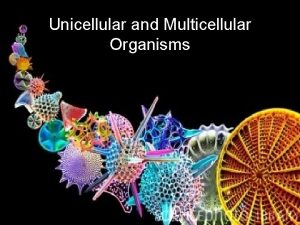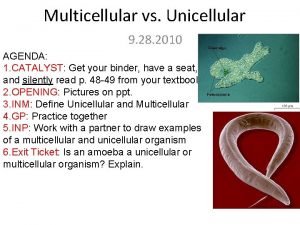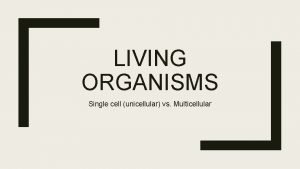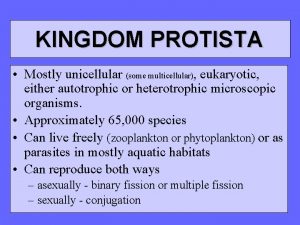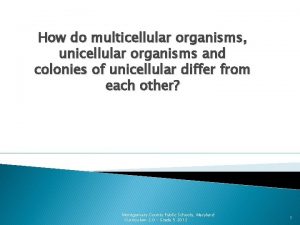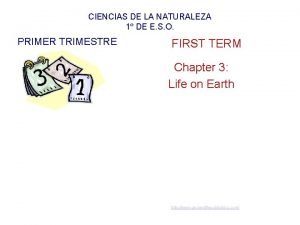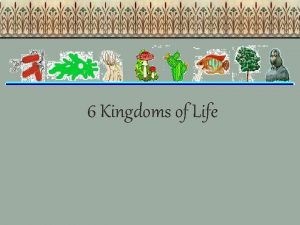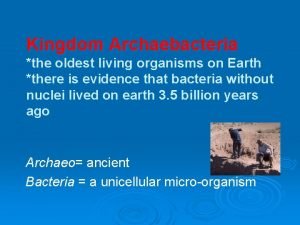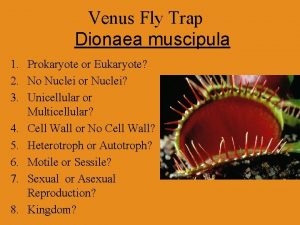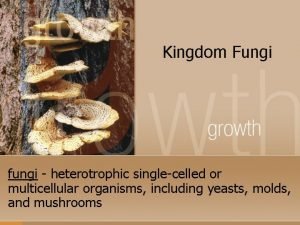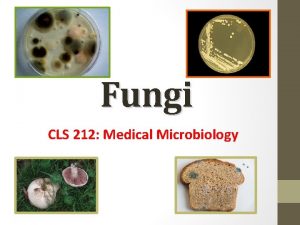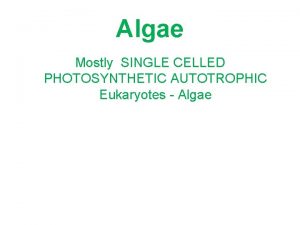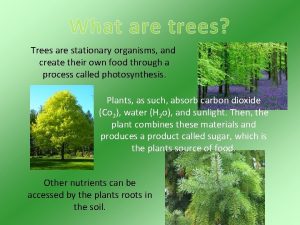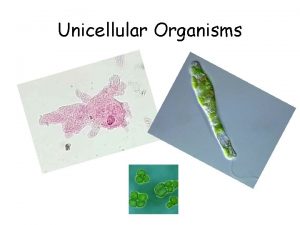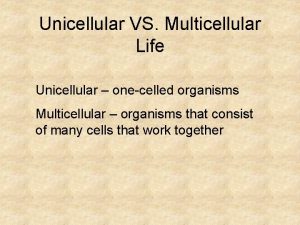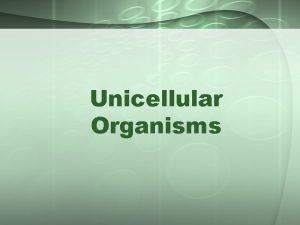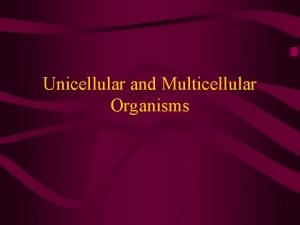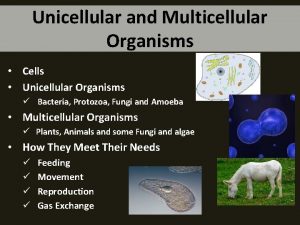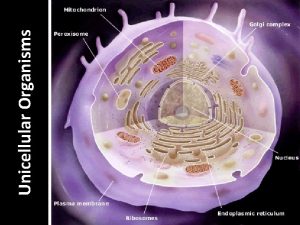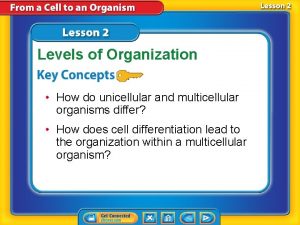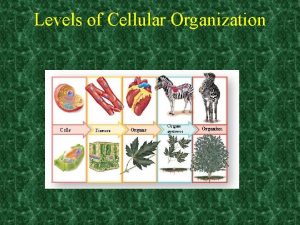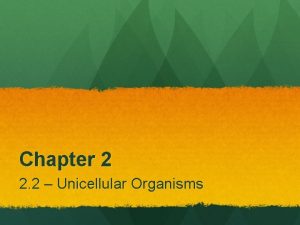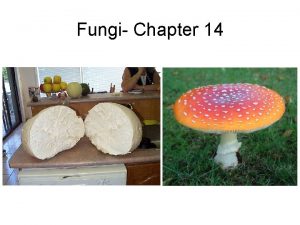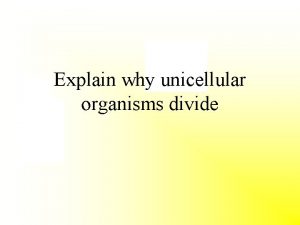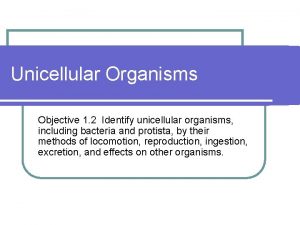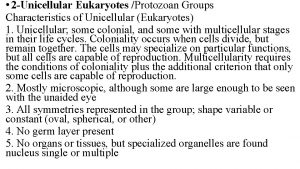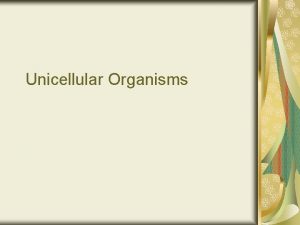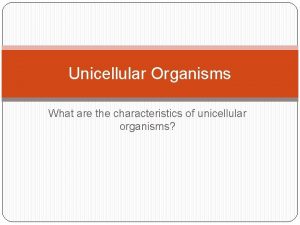Unicellular Multicellular Organization Chapter Introduction How can one























- Slides: 23

Unicellular & Multicellular Organization



Chapter Introduction How can one cell become a multicellular organism?

Levels of Organization • How do unicellular and multicellular organisms differ? • How does cell differentiation lead to the organization within a multicellular organism?

Levels of Organization • cell differentiation • stem cell • tissue • organ system

Unicellular Organisms • Most are microscopic • Examples: Amoeba, Paramecia, E. Coli • Perform the same tasks as multicellular organisms • They move, eat, reproduce and expel waste.

Examples of Unicellular Organisms �Amoeba �Unicellular fungi �Bacteria �Unicellular yeasts �Protozoa �Paramecium (picture) �Unicellular algae

Unicellular Organisms Lesson 2 Unicellular organisms carry out all life processes, including responding to the environment, getting rid of waste, growing, and reproducing, within one cell. • A unicellular organism made of one prokaryotic cell is called a prokaryote. • A unicellular organism made of one eukaryotic cell is called a eukaryote.

Unicellular Organisms Lesson 2 (cont. ) • A cell without a membrane-bound nucleus is a prokaryotic cell. • A eukaryotic cell has a membrane-bound nucleus and many other specialized organelles.

• Examples: Amoeba and Paramecium, both unicellular. Algae, or plant-like protists, have characteristics of plant cells. Examples: Chlamydomonas (unicellular

Multicellular Organisms Definition: Multicellular organism – an organism made of two or more cells Information: v. These organisms are able to be seen with the naked eye. v. These organisms need all parts of itself to survive.

Common Names • Many – celled organisms-Eukaryotic organisms • Mammals –Birds -Reptile -Fish. Examples of Multicellular Organisms • Humans- Cats - Birds -Flowers-Mold -Trees • Dogs -Insects

Images of Multicellular Organisms

Compare/Contrast • Unicellular Organisms – (one celled) organisms are good models for membrane transport, because they need to perform MANY functions with one cell, rather than many types of cells. • Multicellular organisms that consist of more than one cell, in contrast to single-celled organisms. To form a multicellular organism, these cells need to identify and attach to the other cells.

Multicellular Organisms Lesson 2 Multicellular organisms are made of many types of eukaryotic cells working together, each with a specialized function. How do unicellular and multicellular organisms differ?

Multicellular Organisms • Rely on a variety of cells to perform cellular functions. These are called “specialized cells”. • Specialized cells perform duties such as digestion or movement. • Example: Eyes, Muscles and Tongue. (what duties do these perform? ) • Cells can be compared to small cities. Each one performs a different job/function. They all work together to be efficient. Just like we need specialist doctors, cells need specialist cells.

Multicellular Organisms Lesson 2 (cont. ) Stem cells are unspecialized animal cells that are able to develop into many different cell types.

Multicellular Organisms Lesson 2 (cont. ) • All cells in a multicellular organism come from one cell: a fertilized egg. • The process by which cells become different types of cells is called cell differentiation.

Multicellular Organisms Lesson 2 (cont. ) Tissues are groups of similar types of cells in multicellular organisms that work together to carry out specific tasks.

Multicellular Organisms Lesson 2 (cont. ) • Humans, like most other animals, have four main types of tissue: muscle, connective, nervous, and epithelial. • The three main types of plant tissue are dermal, vascular, and ground tissue.

Multicellular Organisms Lesson 2 (cont. ) • Organs are groups of different tissues working together to perform a particular job. • Organ systems are groups of different organs that work together to complete a series of tasks.

Multicellular Organisms Lesson 2 (cont. ) Multicellular organisms usually have many organ systems that work together to carry out all the jobs needed for the survival of the organism. How does cell differentiation lead to the organization within a multicellular organism?
 Unicellular vs multicellular activity
Unicellular vs multicellular activity Diatoms unicellular or multicellular
Diatoms unicellular or multicellular Images of multicellular organisms
Images of multicellular organisms Is eubacteria multicellular or unicellular
Is eubacteria multicellular or unicellular Is yeast multicellular or unicellular
Is yeast multicellular or unicellular Multicellular organisms
Multicellular organisms Multicellular protista
Multicellular protista Are protists unicellular or multicellular
Are protists unicellular or multicellular Is yeast multicellular or unicellular
Is yeast multicellular or unicellular Unicellular organism
Unicellular organism Apakah alga multiseluler
Apakah alga multiseluler Escherichia coli unicellular or multicellular
Escherichia coli unicellular or multicellular Are protists unicellular or multicellular
Are protists unicellular or multicellular Jamur uniseluler adalah
Jamur uniseluler adalah Is yeast multicellular or unicellular
Is yeast multicellular or unicellular Are thermoacidophiles unicellular or multicellular
Are thermoacidophiles unicellular or multicellular Is a venus fly trap prokaryotic or eukaryotic
Is a venus fly trap prokaryotic or eukaryotic Rhodophyta unicellular or multicellular
Rhodophyta unicellular or multicellular Unicellular or multicellular fungi
Unicellular or multicellular fungi Arthospore
Arthospore Oedogonium autotrophic or heterotrophic
Oedogonium autotrophic or heterotrophic What are trees
What are trees Verzeala zidurilor
Verzeala zidurilor Euglena unicellular or multicellular
Euglena unicellular or multicellular

